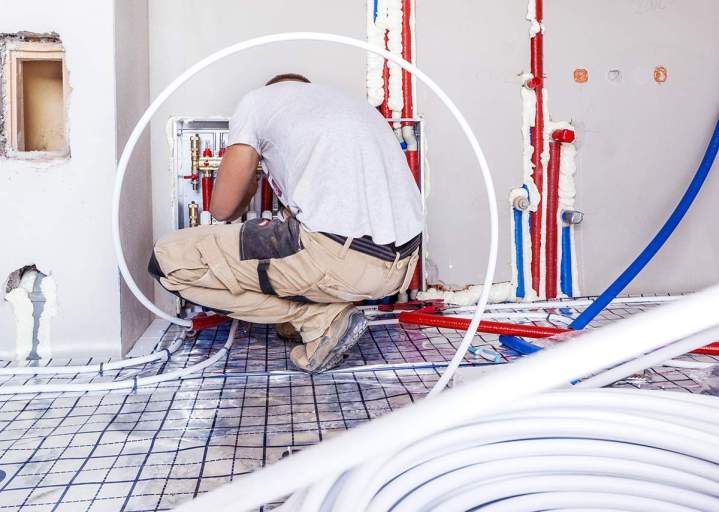Is there a risk of overheating?
Floor Microclimat / August 14, 2025

Here's why it's safe:
1. Automatically controlled temperature
The system is designed to provide gentle and stable heating. The thermostat (often with a sensor placed directly in the floor) measures the floor temperature in real time and prevents it from becoming too hot. It automatically turns off the heating as soon as the desired temperature is reached.
2. Low-temperature heat
Radiant floor heating doesn't heat to 60 or 70°C like a radiator: in general, the floor remains around 24 to 29°C, which is comfortable underfoot but never scalding hot. Even the water circulating in a hydraulic system is generally between 30 and 50°C, depending on the type of flooring and the energy source.
3. Well-designed systems = safety
If the system is properly sized and installed by a professional, it heats just the right amount. It will never "speed up" like an old convector heater that suddenly heats too much. It takes its time, heating continuously and gently.
Rare cases of overheating?
They occur most often when:
- The thermostat is incorrectly set or missing.
- The floor sensor is incorrectly positioned or defective.
- The system is poorly installed (e.g., insufficient screed thickness, poor insulation).
Can you leave the system running 24/7?
Yes, you can definitely leave your radiant floor heating running 24/7, and it's often the best way to use it.
Why leave it on continuously?
Radiant floor heating isn't like a convector or electric baseboard heater, which heats up quickly and cools down just as quickly. It's a system that works slowly but surely: it heats up slowly, retains heat for a long time, and then continues to diffuse a gentle, steady heat.
If you turn it off and then want to turn it back on later, it can take several hours for the floor to warm up again... so you lose comfort and efficiency.
Does it consume more energy?
Not necessarily. Since the system heats at a low temperature, it consumes little energy once the desired temperature is reached. By leaving it on continuously, it doesn't have to work hard to compensate for a significant temperature difference—which can even save energy in the end.
And if you want to optimize even further, you can use:
- A programmable thermostat to lower the temperature slightly at night or when you're at work.
- Control zones to adjust the heat according to the room (for example, a little warmer in the bathroom, a little cooler in the bedroom).
In summary:
Yes, you can—and even should—leave your radiant floor heating on 24 hours a day. It's designed for that. It's what guarantees you constant comfort, without temperature spikes, without drafts... and without having to fiddle with buttons every day.
It's heating you forget you're there... but it makes you feel good all the time.